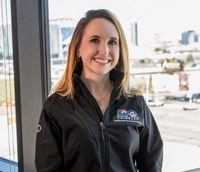How CDOT keeps what washes off the roads out of our water
CDOT’s DMO permanent water quality team
By: Stacia Sellers, CDOT Strategic Communications Lead, Major Projects and Operations
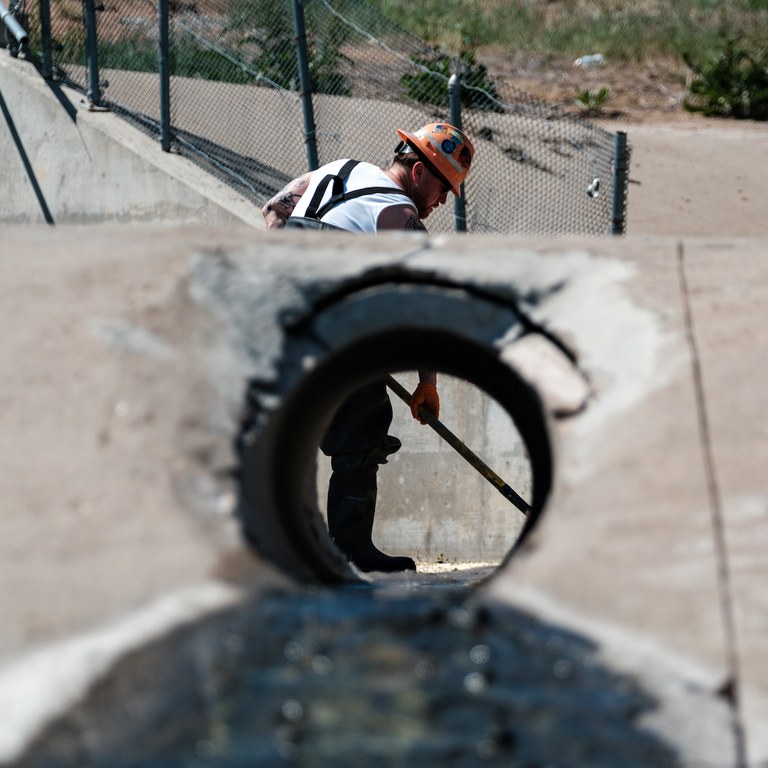
It was the smell I couldn’t shake. Like rotten garbage had burrowed into my sinuses. It was 1 p.m., the sun was hot, and about an hour ago, I was hungry. Not anymore.
I was spending the day shadowing CDOT Division of Maintenance and Operations Permanent Water Quality team — informally known as PWQ. The guys had just finished inspecting and cleaning out one of the state’s 421 control measures — a term used in the industry to describe a piece of infrastructure built along a roadway that traps trash, sediment, chemicals like sodium, and other debris that washes off the road.
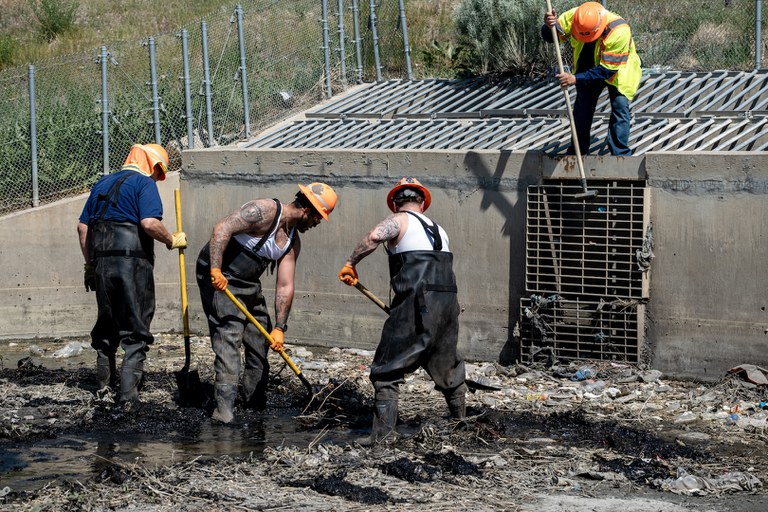
They were peeling off their heavy waders, about to hose off the gunk and slime they’d been shoveling away so water could freely flow through what’s essentially a big concrete ditch before the next rains hit Denver. What they were washing off smelled like raw sewage. The guys were unfazed.
It’s not an easy job — and certainly not a glamorous one — but on a list of “most impactful green jobs in Colorado,” it might rank among the top. What the PWQ team does plays a major role in mitigating the impact of roadway infrastructure on our urban and rural environments. Maintaining this vast network of statewide infrastructure keeps literal tons of garbage out of streams, rivers and reservoirs. Today they were using shovels. Some days they use excavators.
Our day started by meeting at a postcard-worthy spot in Sedalia. Imagine the sun rising over the foothills, spreading warm morning light over horse pastures and gently babbling brooks. I met up with Jesse Abeyta and his team. They cover CDOT’s Region 1 (Denver/Central Colorado), which runs along the I-25 corridor from Castle Rock through the Denver-metro area.
They had pulled their trucks along the shoulder of Colorado Highway 85 and were setting up traffic control so they could run a little aluminum-brick-looking machine on wheels called a Cues Camera through a culvert that an internet fiber installer had accidentally damaged. If left unrepaired, the culvert would clog, causing flooding of the roadway and treacherous ice patches if the nights got cold enough.
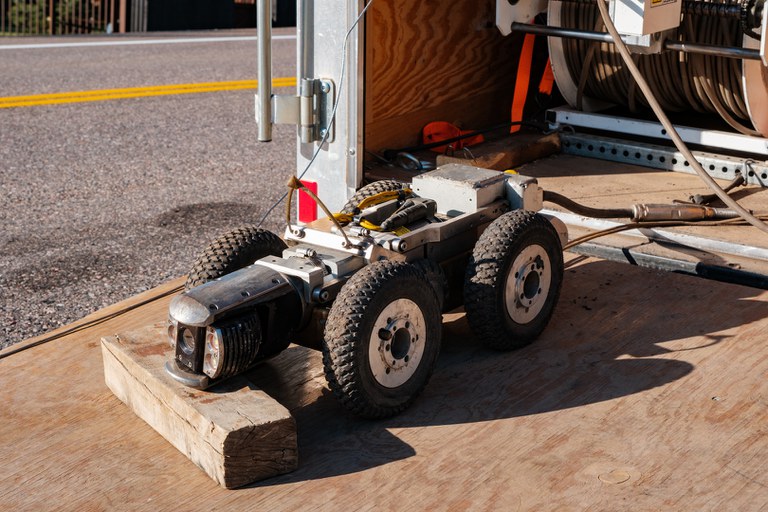
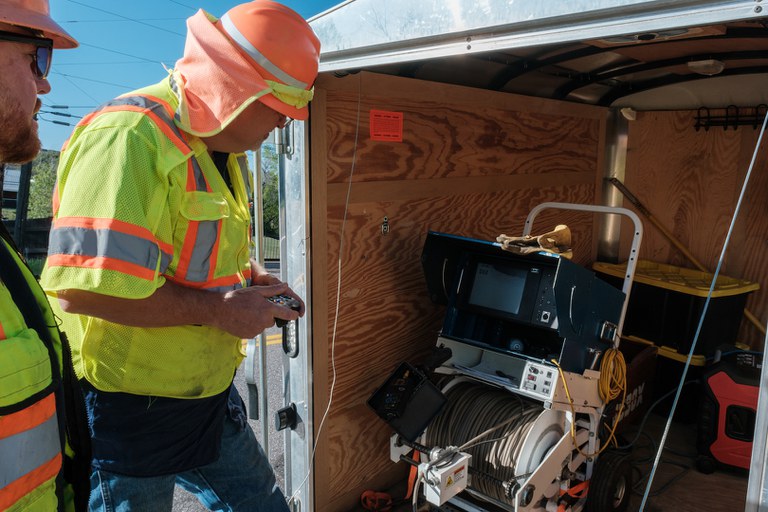
The heavy little machine was pretty cool. It had bright headlights and was controlled by someone using what looked like a Nintendo controller. My amusement aside, serious technical know-how is a part of this job. It takes both serious book smarts and calloused hands to do the job well — and that shouldn’t surprise anyone.
After Sedalia, we took a short drive past a world-renowned golf course and stopped along an I-25 frontage road in Castle Pines. The mission here was to look for, identify, document and treat invasive weed species that were spreading along the pastoral roadside. Trucks carry dirt, and dirt carries seeds, and both blow around on the interstate, making this a never-ending task to keep the invasive species at bay.
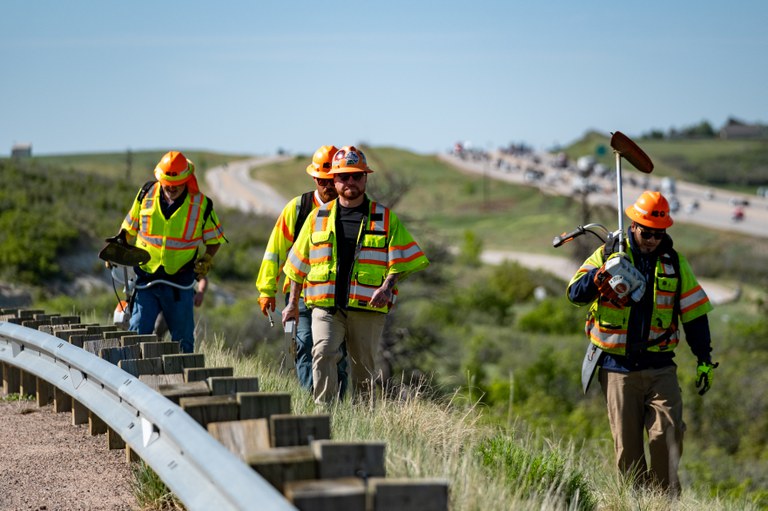
I talked with Ken Howlett, who had joined us at this location. Ken is one of CDOT’s roadway managers and works under the department’s Environmental team. Environmental and DMO work hand-in-hand toward the same end goal: doing everything they can to balance the transportation needs of people and commerce, roadway safety and protecting roadside and waterway environments (even air quality in some regards).
Finding the balance between safety and impact is hard,” said Ken. “But we really go to extreme measures to reduce that impact on the environment.
With that in mind, I followed men carrying tanks of herbicide on their backs and other guys wielding industrial weed whackers through the dense high-plains underbrush in search of pesky Myrtle Spurge, Knotweed and other villains dubbed noxious weeds by the state department of agriculture and marked for eradication. Some carried trash bags. The next time you consider throwing a fast food cup out your car window, consider these earth warriors. They have better things to do than pick up after you.
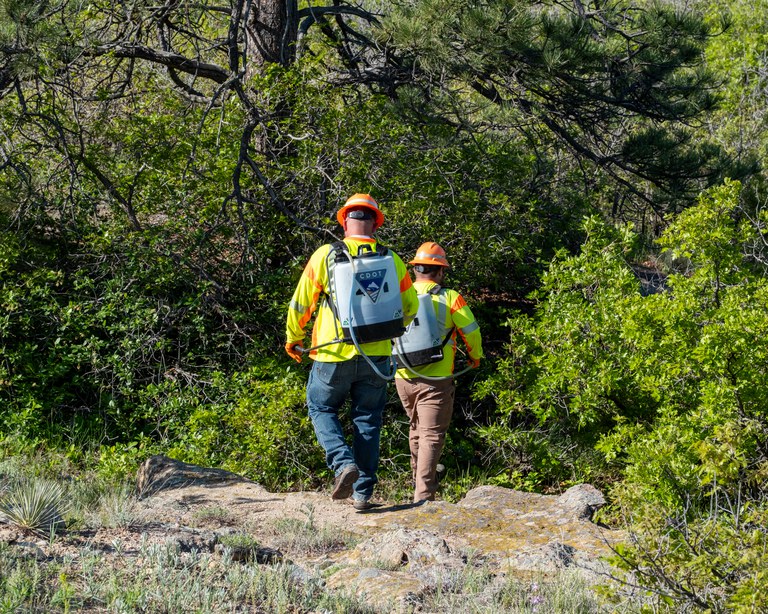
After Castle Pines, it was off to Aurora and the intersection of I-225 and Parker Road. Litter bugs aside, know that your car — or your truck’s payload — could be a serious offender as well. Oil, gasoline, plastic car parts…all things that come off of, leak out of, or that your vehicle drives through can end up on the road and is then washed off into our waterways. And I saw — and smelled — it all.
And truckers, always remember to tarp your load. It’s state law, so be aware. If keeping Colorado beautiful doesn’t convince you, maybe knowing you could be fined will.
It was a long day. And I was just an observer with a camera in my hand. After Aurora, I spent some time eating In-N-Out burgers with the crew at CDOT’s “KOA” maintenance facility on the eastern edge of the metro area. I’ve been to this facility many times, and it never ceases to impress. I got demonstrations of the vacuum trucks used to clean out control measures, a peek at the giant pile of aggregate used in the winter months, and saw the training facility where a class of new recruits was learning about PWQ.
In all my conversations with Ken, Jesse and the other crew members, never once did I hear a complaint about how hard or dirty the work was. What I did hear over and over again was that these guys truly believe in the valuable, meaningful work they’re doing.
One soda can, one weed, one storm sewer grate at a time, these maintainers are playing an integral role in keeping our rivers fishable, our reservoirs swimmable and Colorado’s picturesque landscapes beautiful to look at.
At one point in the day, Jesse said it best: “A lot of people don’t know what we’re doing out here. But that’s ok. We’ll keep doing it.”
The CDOT Division of Maintenance and Operations is always seeking qualified maintainers, plow drivers and more — especially in more rural areas of the state.
CDOT jobs offer stability and great benefits. But more than that, we offer jobs with a purpose — jobs that are in demand and help keep our communities open for business, open for travel, and keep your neighbors safe on the road. To learn more about careers at CDOT, visit careers.codot.gov.
Thanks to Jesse, Ken and the whole PWQ crew. Keep fighting the good fight — and handling the dirty work, even when it stinks.
About the Author:
